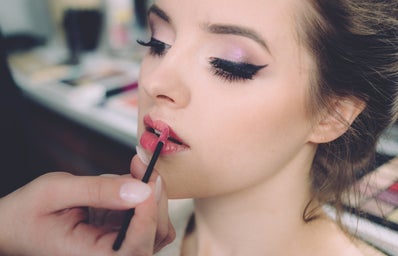In my world, beauty has always been an elusive concept to grasp. Beauty was always described to me as a conditional state: one had to have pretty features, be fair and slim in order to be considered beautiful. However, one of the conditions outweighed all the others most of the time and this was the color of your skin. How fair skinned you were really mattered. The stigma of being born with dark skin was almost punishable if you ask me. And in today’s society, I find that in the light skin vs. dark skin debate, light skin always wins.
Try to remember your latest trip to the mall. You notice that most retail stores display the newest trendy fashions on mannequins with blond hair, blue eyes and milky white complexions. All the ad campaigns, the bill boards, and the posters of each store you see feature mainly Caucasian men and women. All people of colour are underrepresented. Even though retailers are trying to step up their game by casting people of color in their advertisement campaigns, they just are not doing enough. Every model in those ad campaigns look nothing like the thousands of shoppers that pass by those stores every hour. The advertisements and store posters could be considered to be quite misleading, as they promote a look that is unattainable for most people: beautifully airbrushed silky hair; a tall and thin body and, most importantly, a fair and flawless complexion.
I was born and grew up in a little South Asian country, a tropical country where most people have dark coloured skin. This fair complexion seen in every advertisement campaign would be very hard to attain for any of us unless through artificial means. In a world where having lighter skin is the preference, many women have a hard time with acceptance and fitting in, and this should be no surprise. These advertisements around us are truly racist and disagree with the unified concept of equality, as surely the underrepresentation of people of color in the media is widely noticed. As far back as I can remember, a woman’s complexion has been a very big deal in my native land. When I was a child, my grandmother forbade me to play outside in the sun to prevent me from getting any darker than I already was. My aunt gasped in disbelief after one of my trips to the beach that the effect of sun had blackened my skin. “You used to be so pretty,” my grandmother would say; in other words: “You used to be so light-skinned.” Growing up as child and exposing my skin to the sun had not only made my skin black but also made me less beautiful. This disturbing obsession with fairness has only grown more prominent in recent years with the invasion of European and American retailers and the growth of technology via the internet. The obsession with having fair and beautiful skin has only made this world a more dangerous place to live. Young women like me battle everyday with using the right products for my skin whether it be sunscreen or bleaching products to preserve it so it doesn’t darken. Vivid memories of my aunt forbidding me to ever visit the bonfire next door now haunt me. She used to say that if my skin ever came into contact with the smoke, it would darken my skin and make me potentially ugly. Afraid of her words, I stayed away from any fire blazing activities for the rest of my life.
Back in my native land, the elders believed the main reason a woman must preserve her fair complexion was so that her suitor would find her beautiful. Arranged marriage is extremely prominent in South Asian countries. Finding a suitor for when the time came to marry was quite like a talent competition. A woman would have to have countless good qualities to be the suitable wife of a man. The man would usually get his pick over a dozen different types of women. The main factor for judging of course was appearance: the woman had to have a fair complexion so her kids too would be fair skinned. The “fair skin” ideology put my childhood through a bumpy ride as far as I can remember. I was forced to stay away from the sun and had to apply bleaching creams on my skin like ˝Fair and Lovely˝ every day.
Upon further investigation, I discovered that this issue has a name, It is called Shadeism. Shadeism is a form of skin tone bias that identifies groups and individuals on the basis of degree of skin pigmentation. In a recent interview conducted on Shadeism in the life of a Dominican woman, the light skinned Dominican woman felt that skin color was not an issue and that it didn’t affect how attractive she thought she was or how others viewed her. She believed that someone being uncomfortable in their skin color was more of a personal matter. However, the dark skinned Dominican, felt the pressures of trying to fit in and change her appearance. Whereas the light skinned Dominican felt accepted the dark skinned Dominican felt like she had to change something about herself. Growing up, I was even told stories about the concept of light and dark. Super hero stories where light skinned individuals were associated with being good and evil characters were associated with being dark was very prominent.
It has taken me a while to understand the effects of the media on my identity. Even though the effects have been established, it is not too late to take a stand and revolutionize the concept of true beauty. I sincerely hope things will get better as I am starting to see retail outlets focus their advertising on individuals of colour and hopefully generations to come too will shun these racist ideas and take on new and an ethnocentric approach to determine what beauty is.


